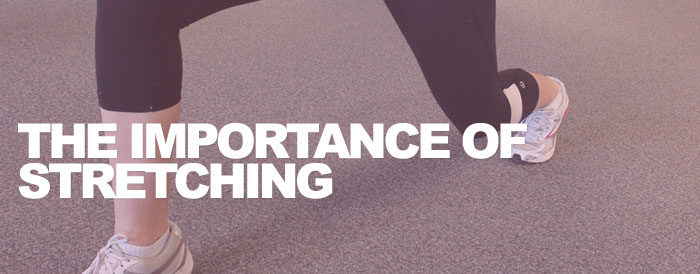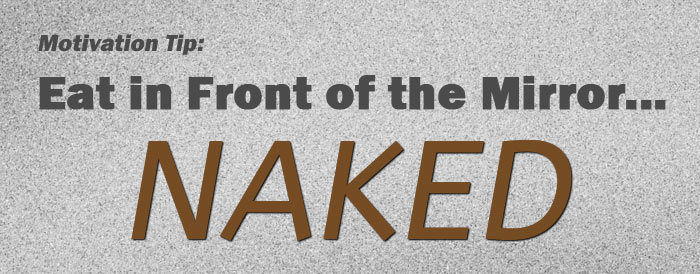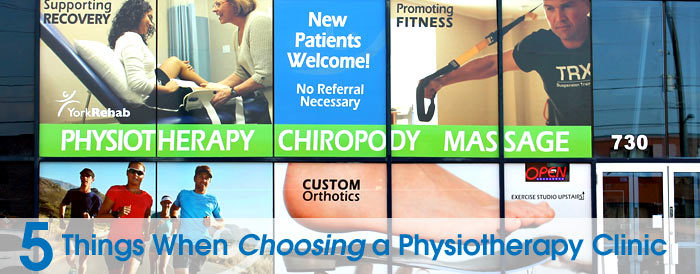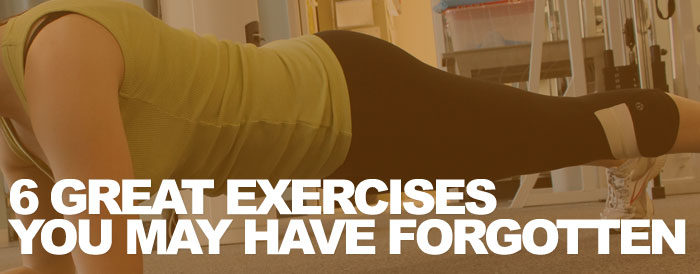Physiotherapy Articles
Cupping Therapy…Fact or Fiction
If you watched swimming during the Rio Olympics you undoubtedly saw at least one of Michael Phelps races and noticed the purple dots. Given Phelps walked away with 5 golds and a silver those purple dots have created quite a buzz. Can these seemingly magical dots make all of us swim like an Olympian or at a very minimum heal us from our aches and pains? Well, the truth is, no one can say for certain what role those dots play in the healing/recovery process since there isn’t a lot of scientific evidence to support the practice. The practice, by the way is called cupping. And magical or not, given the number of wins under Phelps belt in Rio 2016, it would seem as though the dots have helped in some way.
Cupping therapy is a form of alternative medicine that dates back many centuries and can be linked not only to Asian and European practice but also to Egyptian and ancient Greek as well. There are two types of cupping: dry and wet with multiple variations of each type. The basic principle for all types involves the creation of suction, by placing a special cup (varying types depending technique) on the skin to create focused suction in the targeted area. The cup remains in place for several minutes (ranging from 3 – 15mins depending on the practice) while the vacuum creates pressure drawing blood to the region…hence the purple bruising.
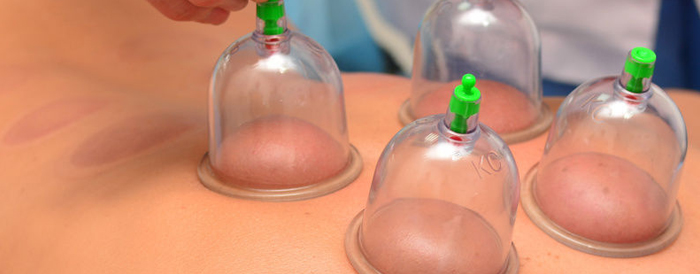
Given its association with such a high profile and successful athlete, cupping will definitely become a treatment option many people will want to explore. However, like any other treatment method, it’s important to understand what you’re getting into.
Regardless of the type of cupping, the therapy method is rooted in the creation of suction. Traditionally, the treatment approach involved using something flammable like alcohol, cloth or paper to create a flame which would then be inserted into the cup to create heat. The flame would then be removed and in a quick fluid motion, the cup would be placed on the patient’s skin. The result, a vacuum would be created as the air inside the cup cools causing the suctioning effect. A more modern and common approach amongst practitioners in the Western world is to use a pump to create the suction. In either case, the suctioning leads to the rising and reddening of the skin as blood flow increases to the area, swelling the blood vessels leading to the skin bruising (i.e. circular marks).

Wet cupping derives its name from the fact that a small amount of bleeding is induced during the process. After the initial placement of the cup to create the suction, it is removed and then very tiny incisions (using a scalpel) are made to the suctioned area. The cup is then placed back onto the same area to induce more suctioning to draw out blood. The reasoning is that this process removes harmful toxins from the area which help support healing.
There’s no medical evidence to support the “drawing out toxins theory”, nor is there much evidence to support the dry treatment approach either. Scientific proof is a bit tricky because it’s difficult to run accurate tests using a control group – creating a placebo effect for suction is not so easy. Basically, you’re either getting suctioned or you’re not…there’s no fooling.
There are cupping advocates that insist that the procedure is undoubtedly useful whether or not scientific proof can be offered. Professionals within the field of medicine will tell you that a patient’s participation is required both physically and psychologically in any healing process. The mind can play a strong role in speeding up recovery so if a patient mentally feels they are getting better their healing process will be faster. So if cupping makes a patient feel better whether slight or significant – then that effect is very real. And likewise, if a world-class athlete believes it helps it becomes an advantage. We all know that at an Olympic level the athletes are all physically well-tuned and capable of winning. Winners are often separated from the rest by their mental capability versus their physical.
Proof or no proof, this type of therapy is very much in practice. And given it has been in use for over 3,000 years it would be a little arrogant of Western medicine to discount its effectiveness just because the practice is not properly understood by western measure. There are also those that say cupping is a risky treatment. In response, it’s important to note is that no treatment is without risk if it’s not delivered by a trained and experienced professional. If you are interested in seeking out cupping as a treatment for your condition, you would be well advised to find an experienced practitioner. You can start by speaking with someone trained in Traditional Chinese Medicine registered with the College of Traditional Chinese Medicine practitioners and Acupuncturists of Ontario (CTCMPAO).
Why Stretching Isn’t Just for the Morning
You have been lifting weights regularly for the last couple months and are beginning to notice more definition. Happy with your progress, you continue to lift and keep getting stronger. Then one day while using the squat press machine, you feel a twinge in your inner thigh. You manage to put the weights back safely but are unable to finish your workout. Wincing in pain you wonder, “What happened?”
Or maybe after a couple years away from swimming you return to the pool. The first couple of laps don’t feel as smooth as they once did. As you continue swimming you notice that your strokes are shorter and your shoulders don’t rotate as easily as they once did. As you towel off you wonder, “What happened?”
Not stretching is likely what happened in these scenarios. Stretching is often an overlooked exercise aspect due to time limitations and because it does not produce visible results. But here are some reasons to not overlook stretching again:
Maintain Flexibility
As we get older, muscles become tighter and our range of motion decreases. Being flexible is beneficial for everyday tasks and regular stretching can help keep the major joints moving freely and maintain mobility. The danger of losing flexibility is reduced mobility – as movements become harder to do, we instinctively do them less which can lead to things like not being able to stoop down, sit cross-legged comfortably, or bending down in a manner that keeps your back safe. Use it or lose it, isn’t just lip service – it’s a sad reality for many. It’s the natural course that many people follow which results in less activity and increased potential for debilitating injury.
Reduce Back Pain
Moving your body freely without limitations means movements are efficient and less painful. Regular stretching can also lead to better posture and reduced lower back pain.
Remain Injury-Free
Every time you lift weights, the muscle is contracting, breaking down and is left in a shortened state. This process leaves muscles feeling sore, tight and at risk for injury. Stretching after lifting weights is essential to reducing the risk of injury, and it can help shorten recovery time.
Improved Muscle Development
Muscles are formed by putting stress, such as resistance or weights, on them while moving through a full range of motion. However, when your range of motion is limited, the development of the muscles is affected. If you want well-developed muscles then make time for stretching.
Now that you know why stretching is important to your routine, be sure to do it correctly. Hold your stretches at the first feeling of resistance. Then breathe for at least a count of ten before releasing. Be sure to modify and adjust stretches to suit your flexibility and range of motion. Stretching is also an activity that can be done as a workout routine. If you’re not sure how, a great way to explore the power of stretching is through Yoga. Find a local studio – you can often get a free intro class (or if participating in a group is too intimidating, find a yoga instructor for a private lesson). You can also YouTube “Yoga for Beginners”. York Rehab also runs a beginner yoga class for those looking to get started.
Not sure which stretches would benefit you the most or how to tailor them to your needs? Consider booking an appointment with one of our physiotherapists who can show you how.
Motivating Yourself to Exercise
You are looking to improve your overall health and know that regular exercise can help with that. So you sign up for a gym membership and have the class schedule on your fridge. But since taking the initial tour of the gym, you haven’t gone back. You just aren’t motivated to exercise. Don’t worry, you are not alone.
Finding the motivation to exercise can be tough, especially if you don’t like exercising. Here are some tips to help find your motivation:
Pack Your Gym Bag – Pack everything you need the night before and place your bag by the front door. Prepacking your bag means you don’t have to decide in the morning whether to exercise or not. Since your bag is packed you have no excuse not to exercise or talk yourself out of going.
Schedule Your Workouts – you put everything else in your calendar why not your workout? Plan your workouts a week ahead so that the time becomes blocked in your calendar. Consider these appointments sacred “me time” and try not to cancel them for other appointments.
Get a Workout Partner – when you know you are meeting someone for a workout, you are more likely to show up because you don’t want to let them down. Having a workout partner can motivate you to put more effort into training because someone is pushing you to do more.
Try Something Completely New – doing a brand new activity will force you to be fully engaged and help keep you motivated to exercise. Whether it’s yoga, fencing, rock climbing, or something else, having an instructor guiding you can make it seem more like a learning experience instead of exercise.
Leverage Your Lifestyle – try combining your workout with an established aspect of your life. Have kids? Go for family bike rides or help coach the kid’s sports team. Have a dog? Explore Thornton Bales Conservation Area or George Richardson Park for a scenic hike or go rollerblading with your pooch. Live in a condo or apartment? Try taking the stairs instead of the elevator down to your car in the morning.
Sign-Up for a Competition – whether it is a 5k run, climbing the CN Tower or participating in a Zumba-thon, the pending event date will help keep you motivated to exercise. When you know you have a reason to train, you are more likely to make yourself exercise so that you can finish the competition.
Find an Activity You Enjoy – when we say “activity” we mean something that will allow you to at least break a sweat (so scrap-booking doesn’t qualify). It’s never too late to learn a new sport – there are many adult leagues not only for intermediate and advanced participants but also for beginners. You can learn to play soccer or hockey. Or explore running or indoor rock climbing. If you find something you enjoy, it’ll be easier to lace up your shoes and get going.
Maintaining your motivation to exercise is sometimes challenging and may not always be related to your mind set. If you want to maintain a steady schedule of activity but find it hard due to recurring pain, it might be a good idea to see a physiotherapist.
5 Things to Consider When Choosing a Physiotherapy Clinic
If you’re in need of a Physiotherapist in Newmarket you’re obviously going to want to find a therapist that will provide great treatment. The way you usually find a reputable Physiotherapist, is by finding a reputable clinic. With so many clinics out there, how do you find a “good” one? Every clinic will likely say they are a “good” clinic, but “good” can be subjective. Here are 5 objective considerations to help you find a physiotherapy clinic in Newmarket (or your local area) that will provide you with reputable treatment.
Convenient Hours
Putting the patient first is a good sign that you’ll be receiving proper treatment. One of the ways of putting the patient first is by offering early morning and evening appointments. The convenience of coming before or after work can be a huge benefit for those who badly need treatment but don’t have the flexibility to make an appointment during their work day. Our Newmarket physiotherapy clinic offers appointments as early as 8:00am and as late as 7:30pm. In addition to convenience, quality care also requires time – some clinics see patients in 15-minute blocks. Our physiotherapists complete 1-hour initial assessments, with 30 min follow up appointments.
Private Treatment Rooms
Having a private room allows you to: feel comfortable working with the physiotherapist; discuss your condition candidly and ask questions without fear of being overheard; learn your recovery exercises in privacy and allows focused (distraction free) interaction with your therapist. While private rooms are not standard at all clinics, they are available at York Rehab’s Newmarket physio clinic.
Ethical Billing
This means developing a treatment plan and schedule based on the needs of your condition, not your available coverage. Some clinics unethically design treatment plans around maximizing a patient’s coverage. Rather than scheduling the maximum number of visits that your coverage allows, York Rehab assesses your condition and develops a treatment plan to meet your needs. This practice saves you from unnecessary treatment sessions and means if you sustain another injury or re-injure yourself, you might still have coverage available.
Registered Physiotherapists
Beware, there are facilities that market themselves as offering physio (i.e. recovery exercises). However, that is not the same as being treated by a registered physiotherapist. Before you begin any type of treatment it’s important to have a thorough assessment completed by a licensed physiotherapist. This will prevent injury and speed up your recovery. All the physiotherapists at our Newmarket physiotherapy clinic are licensed physiotherapists.
One-on-One Ratio
Every appointment at York Rehab is exclusively delivered by a physiotherapist. Some clinics book multiple patients into a single time slot with one physiotherapist. In this scenario, the therapist makes and initial appearance then hands over the patient to a physio assistant. The assistant might then administer a treatment such as ultrasound or electric shock therapy, while the physiotherapist steps away to see another patient(s). Although an assistant is capable of administering such treatment, the patient is better served by the presence of a physiotherapist who can directly observe how the patient is receiving treatment and be available to answer questions or concerns the patient may be having during their recovery process – an assistant is not permitted to provide any type of medical consultation.
If you have any questions about the above list or you would like to book an appointment feel free to give us a call, we’d be happy to assist in whatever way we can.
6 Great Exercises You May Have Forgotten About
Is your workout made of exercises that you have been doing for years? Do you think your physical progress is stalling? Does working out no longer get you pumped? If you nodded yes to any of these, you could be suffering from workout boredom.
By performing the same exercises over and over again, not only are you bored but your body is bored too! Which means your body is no longer being challenged and you are likely not achieving the results you want. Combat workout boredom by incorporating these six exercises into your workout routine:
1. Lunges
Changing the type of lunge you perform is an easy way to beat workout boredom because there are plenty of variations to choose from. Try lateral lunges to target the inner and outer thigh muscles. Or curtsey lunges to improve your balance and coordination. Or the Bulgarian split lunge which provides a fuller range of motion and targets the hamstring muscles.
2. Kettlebell Swings
The kettlebell swing is a full body move that works everything from your core, to your shoulders, to your legs, to your back. On top of conditioning these muscles, kettlebell swings increase your heart rate to provide an excellent cardiovascular workout with minimal impact on your lower body.
3. Single-Leg Squats
Performing single leg squats forces your body to work harder and will develop the glute and adductor muscles more so than the traditional squat. By isolating each leg in turn, you are ensuring each leg does the same amount of work and develops muscles evenly.
4. Calf Raises
Do you play basketball or volleyball and want to increase your vertical jump? Doing calf raises can help you jump higher. Not into a particular sport? Well, that doesn’t mean you don’t need to worry about your calf muscles – they provide support for your ankle and play a role in your overall balance, so be sure to include a couple of sets in your workout.
5. Plank Jacks
Holding plank is great for your core, but challenge your core even more by adding a jumping jack motion with your feet. On top of working your core, plank jacks tone your shoulders, arms, back, thighs and legs.
6. Weighted Side Bends
The oblique muscles can be one of the hardest muscles in your abdominals to strengthen, but weighted side bends target them perfectly. Not only does the side bending motion help trim your waist line which makes you look thinner, but it also engages the muscles along the spine and in the lower back to help improve your posture.
The easiest way to beat workout boredom is to perform exercises that challenge you and your body. Not sure how to perform these exercises or incorporate them into your workout? Book an appointment with one of our physiotherapists who can educate you on proper form and help you develop a customized workout plan.
These exercises are suggestions for individuals already following a regular exercise regimen. However if you experience pain while were performing any of the above exercises, please stop and consult a doctor or physiotherapist. For those recovering from injury or are currently suffering from any type of pain, please consult a doctor or physiotherapist before trying any of the above exercises.


